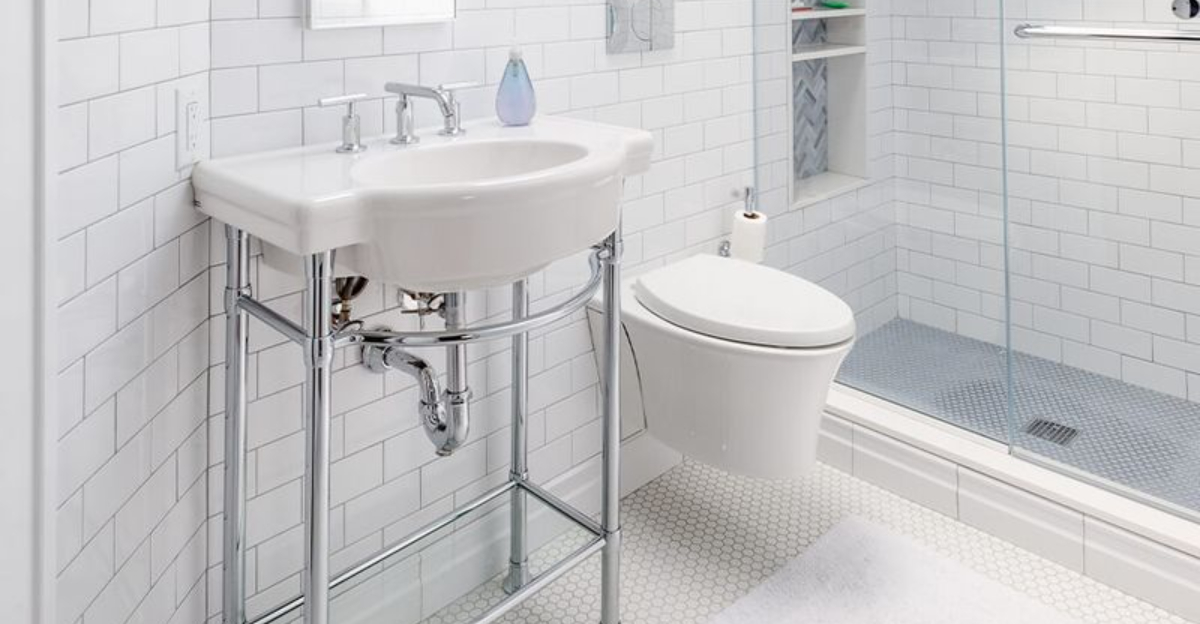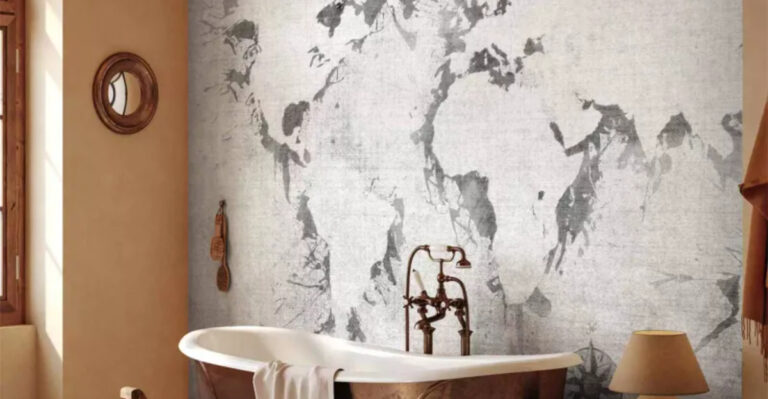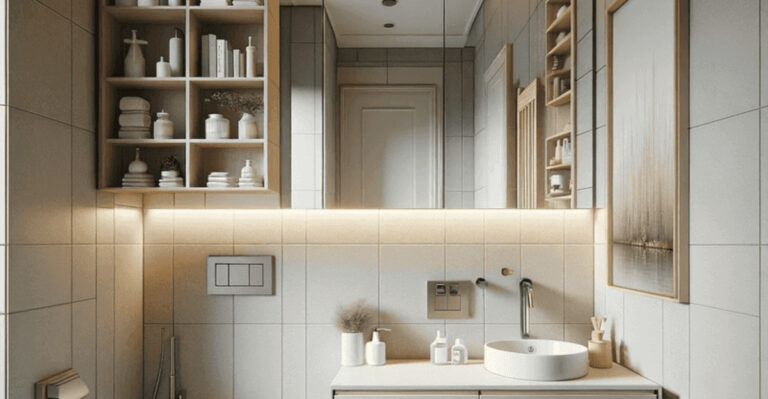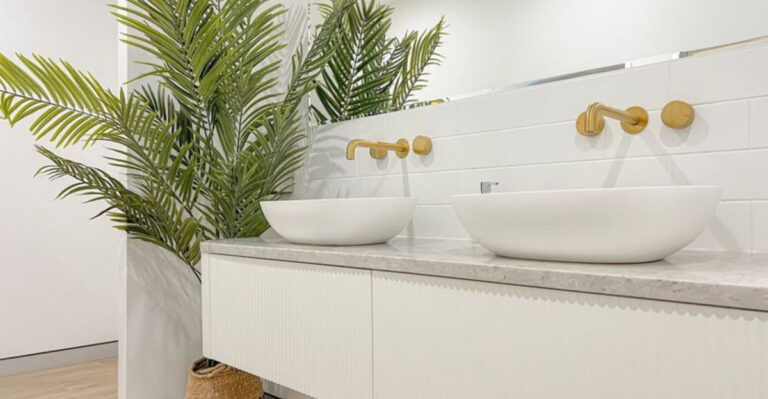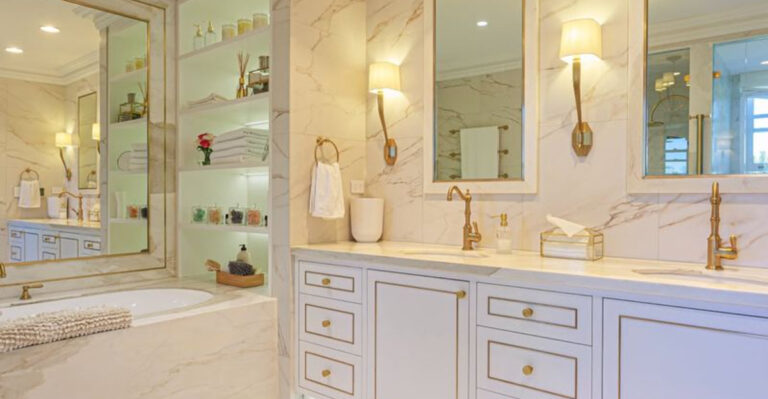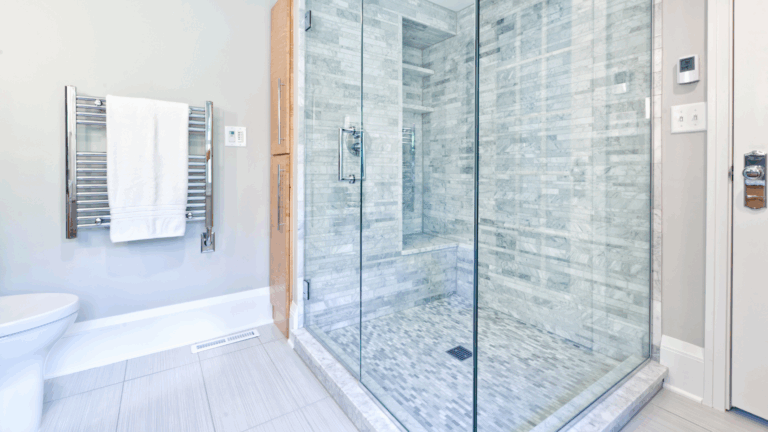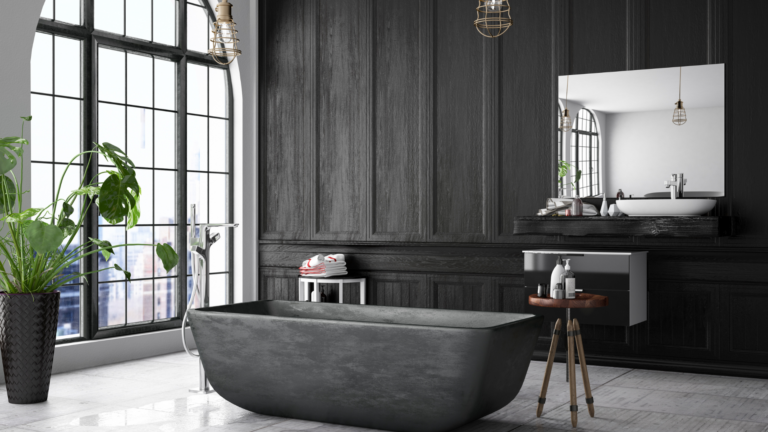10 Small Bathroom Ideas That Add Style Points To Compact Living (Plus 7 Things To Avoid)
Small bathrooms get a bad rap, but honestly, I’ve come to love the challenge. With a few clever updates, even the tiniest powder room can turn into a total scene-stealer.
I’m talking bold wallpaper, statement mirrors, and lighting that actually flatters. It’s wild how a little creativity can make a cramped space feel open, bright, and full of personality. Some of my favorite design moments have come from working with less square footage.
So if your bathroom feels more blah than brilliant, trust me, it’s nothing a few smart choices can’t fix. Small space, big impact? Absolutely possible.
1. Floating Vanities Create Magic Space
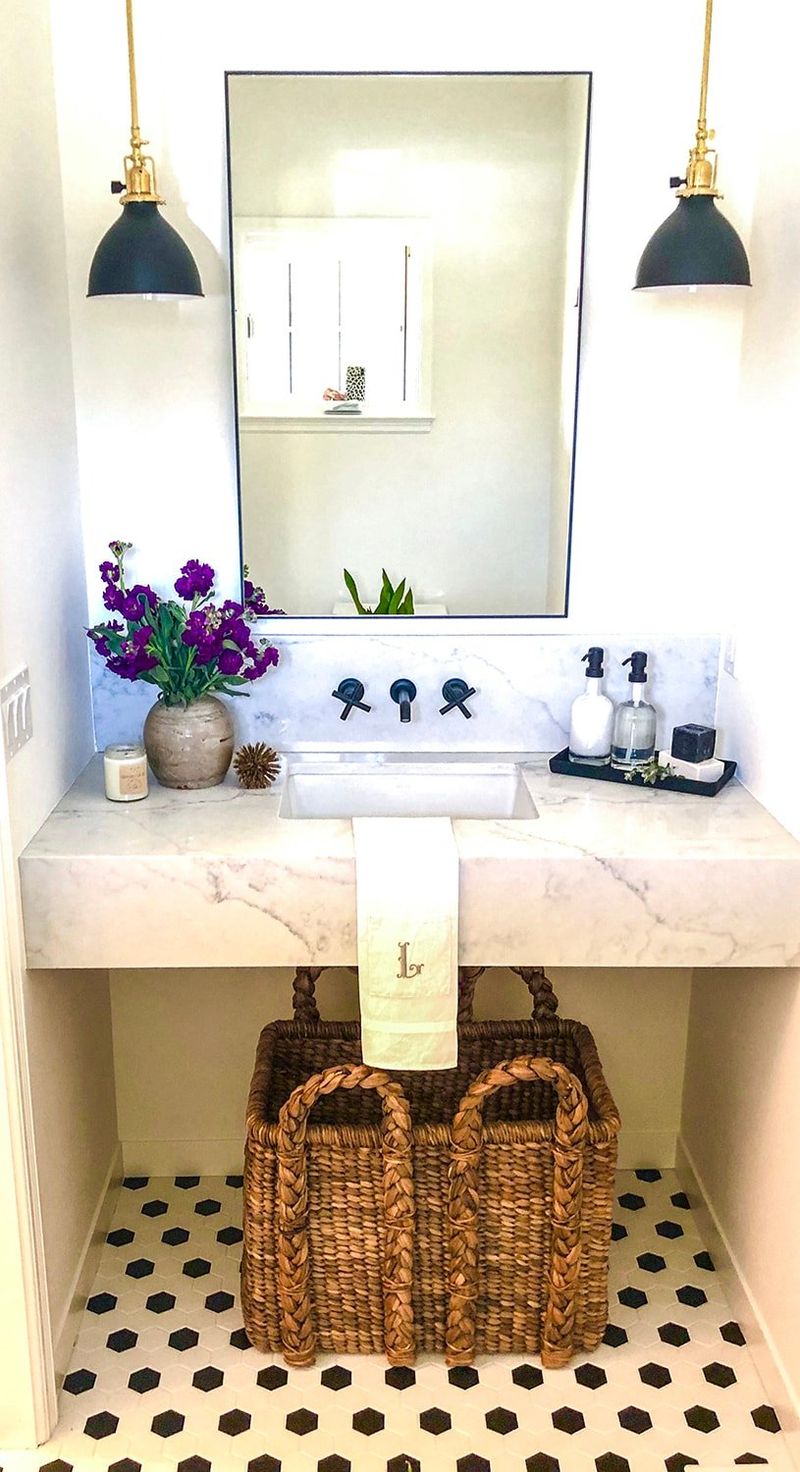
Wall-mounted vanities work like optical illusions for tiny bathrooms. When you can see the floor extending underneath your sink, your brain automatically thinks the room is larger than it actually is.
Plus, cleaning becomes a breeze when you can mop right under everything. Choose a vanity with built-in storage to keep your countertop clutter-free and maintain that airy feeling.
2. Mirror Walls Double Your Square Footage
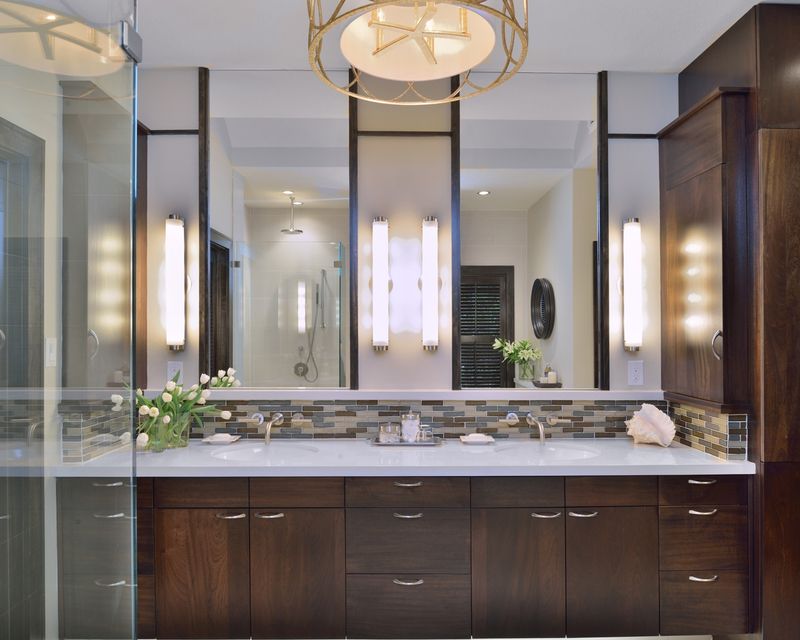
Installing a massive mirror is basically cheating physics in the best possible way. One well-placed mirror can instantly double the visual size of your bathroom without knocking down any walls.
Go big or go home with this trick. A mirror that stretches from counter to ceiling creates maximum impact and reflects every bit of available light around the room.
3. Light Colors Expand Everything
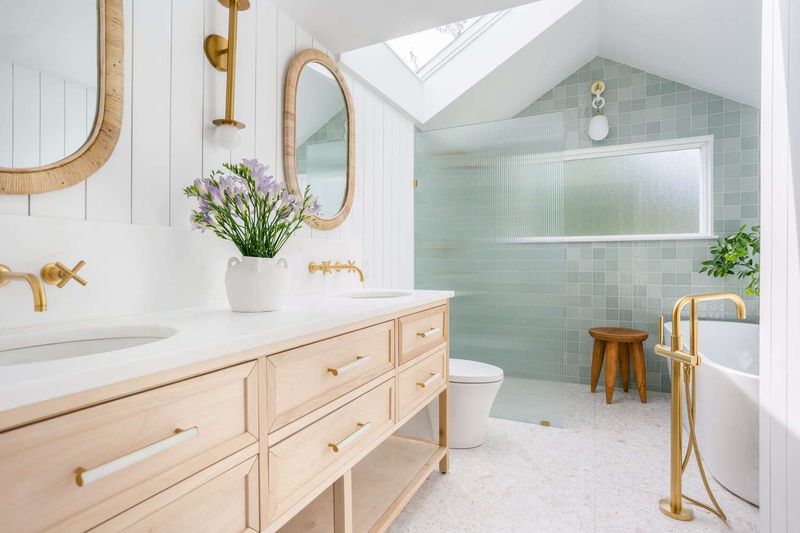
Dark colors might look dramatic in magazines, but they’re space-killers in compact bathrooms. Light shades bounce illumination around like ping-pong balls, making walls seem to disappear into the distance.
Stick with whites, soft grays, or pale pastels for maximum room-expanding power. Your bathroom will feel like it grew by several square feet overnight without any construction work.
4. Vertical Storage Reaches New Heights
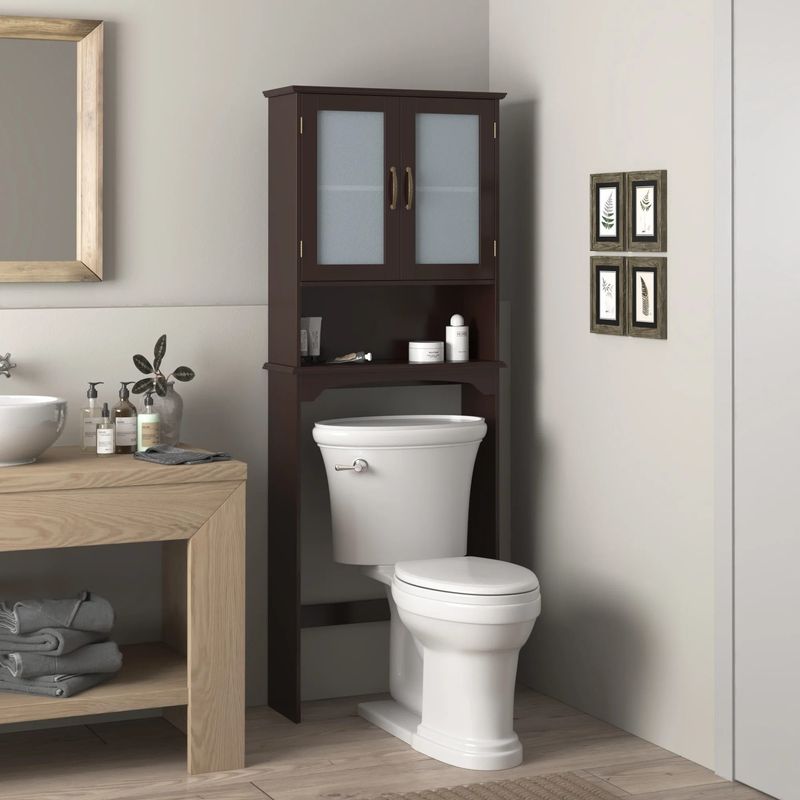
When floor space is precious, think like a skyscraper architect and build upward. Tall, narrow storage units draw the eye toward the ceiling, creating an illusion of height while providing tons of practical storage.
Install floating shelves above the toilet or invest in a ladder-style storage rack. Every inch of vertical real estate becomes valuable storage territory for towels, toiletries, and decorative touches.
5. Glass Shower Doors Open Up Views
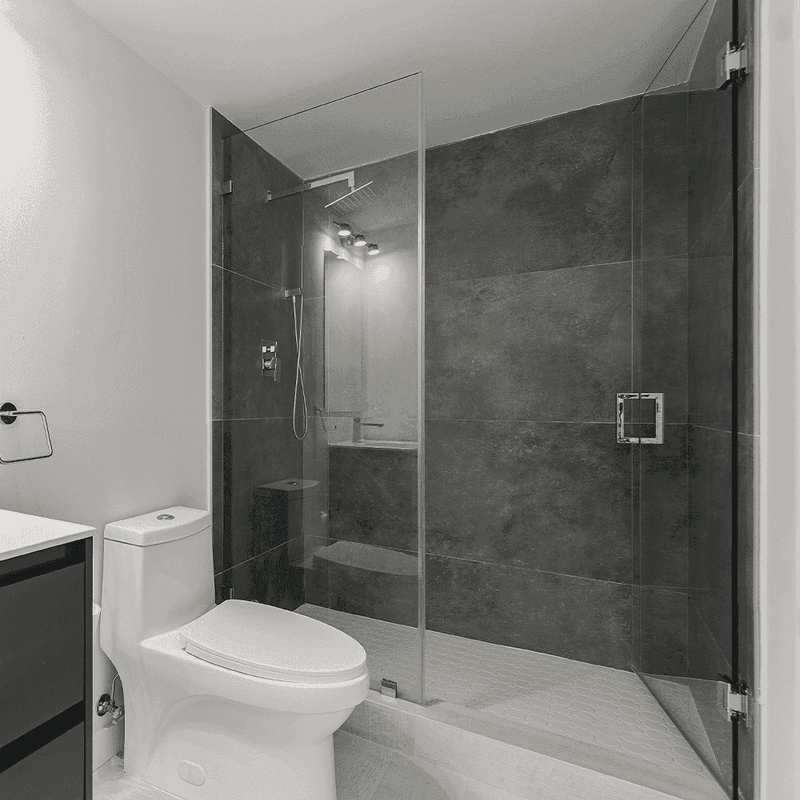
Shower curtains are like visual roadblocks that chop your bathroom into tiny segments. Clear glass doors eliminate these barriers, allowing your eyes to travel freely across the entire space.
Even when the shower area is small, glass doors create uninterrupted sight lines that make everything feel more connected and spacious. Your bathroom transforms from a series of cramped compartments into one flowing area.
6. Corner Sinks Maximize Floor Space
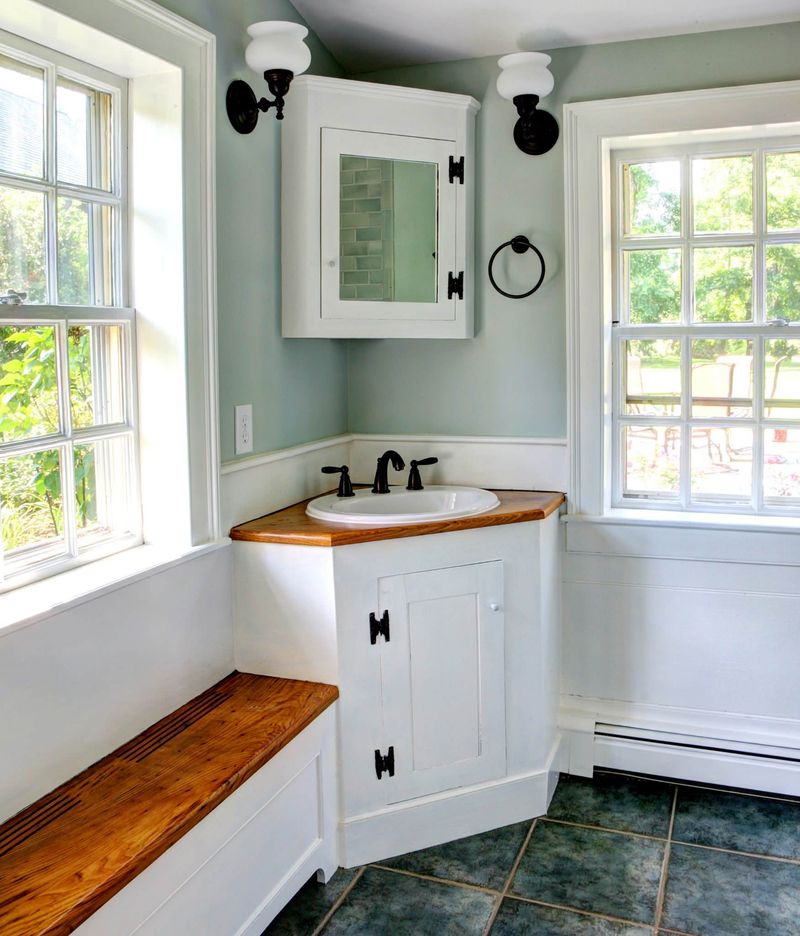
Corner sinks are the unsung heroes of small bathroom design. These space-saving champions tuck neatly into unused corners, freeing up precious floor area for easier movement and storage.
Modern corner sinks come in surprisingly stylish designs that don’t scream “compromise.” You’ll gain several square feet of walking room while still maintaining full functionality for daily routines and guest visits.
7. Recessed Storage Hides In Walls
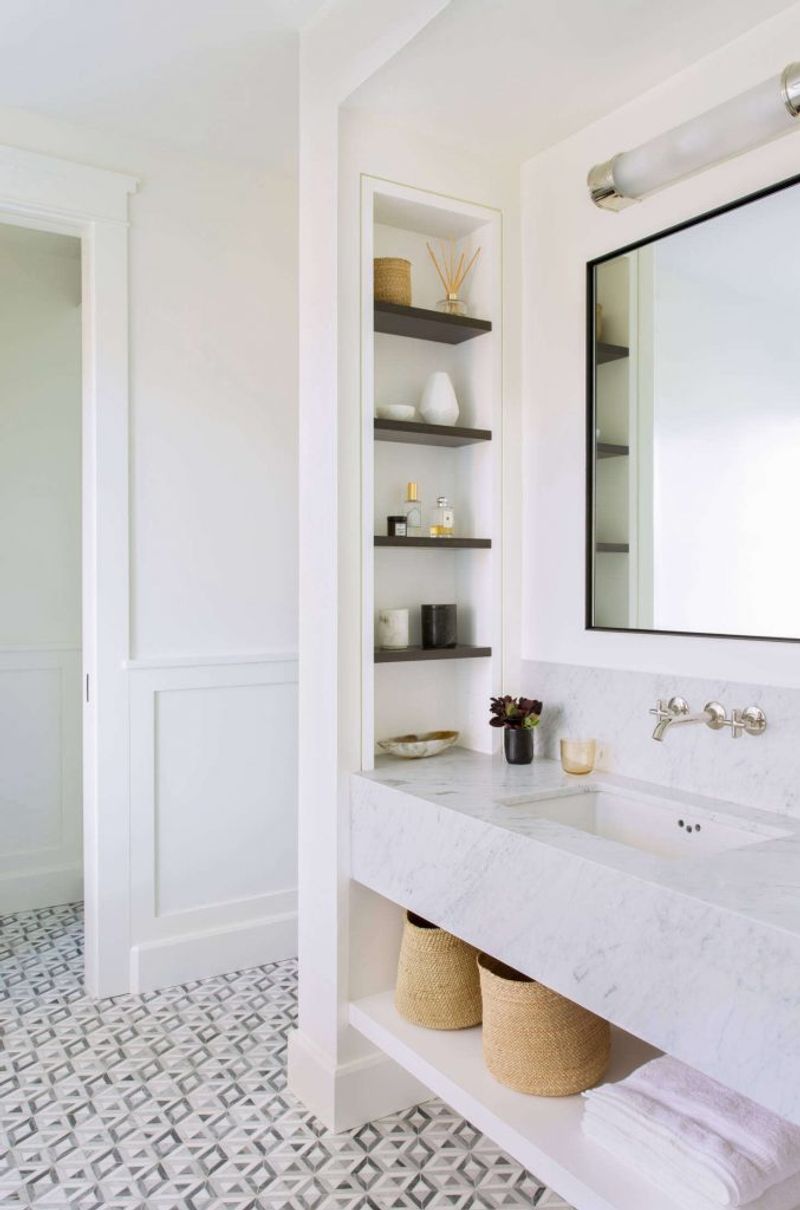
Why let perfectly good wall space go to waste when you could carve out secret storage compartments? Recessed shelving between wall studs creates storage that doesn’t eat up any floor or visual space.
These built-in niches work perfectly in shower areas for shampoo bottles or beside the vanity for everyday essentials. You get organized storage without sacrificing a single inch of your already limited square footage.
8. Pocket Doors Save Swing Space
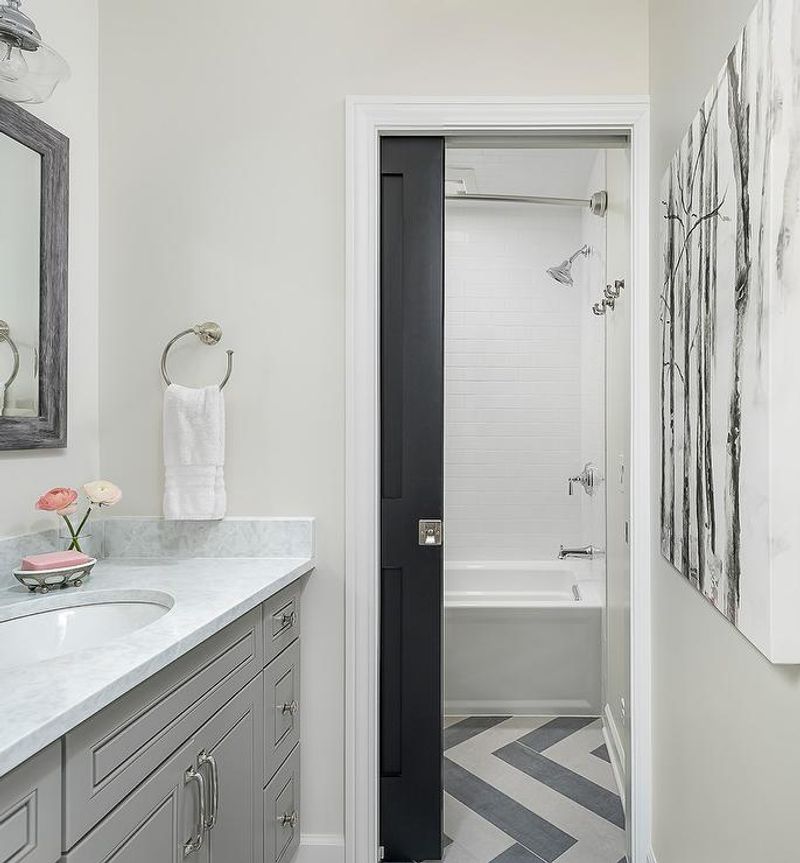
Traditional doors need a three-foot swing radius that eats up valuable floor space in tiny bathrooms. Pocket doors slide right into the wall, completely eliminating this space-hogging problem.
Installing a pocket door instantly gives you back several square feet that were previously unusable. You can finally fit that storage cabinet or plant stand in the spot where the door used to swing open.
9. Pedestal Sinks Create Openness
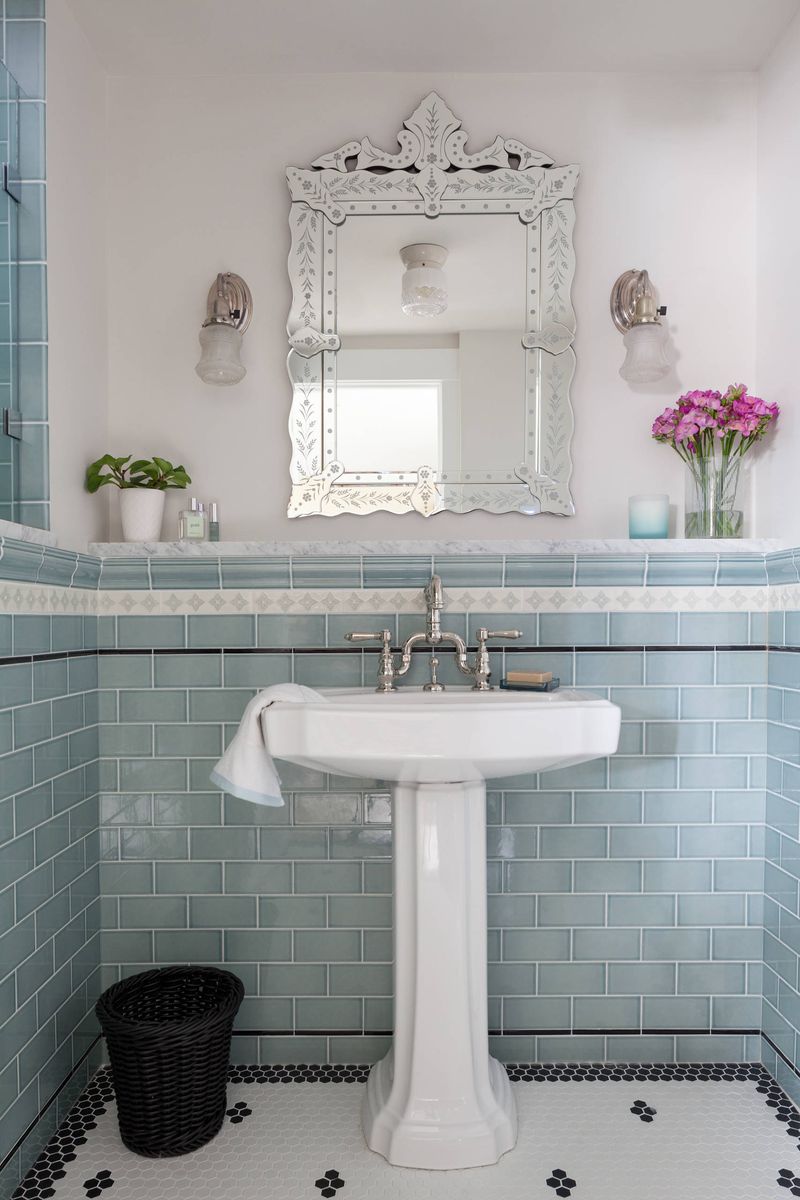
Bulky vanity cabinets can make small bathrooms feel like crowded closets. Pedestal sinks eliminate visual weight by exposing the floor area around the base, creating an immediate sense of openness.
While you sacrifice some storage, the trade-off in perceived space is often worth it. The clean lines and minimal footprint of pedestal sinks make your bathroom feel less cluttered and more breathable.
10. Wall-Mounted Toilets Look Futuristic
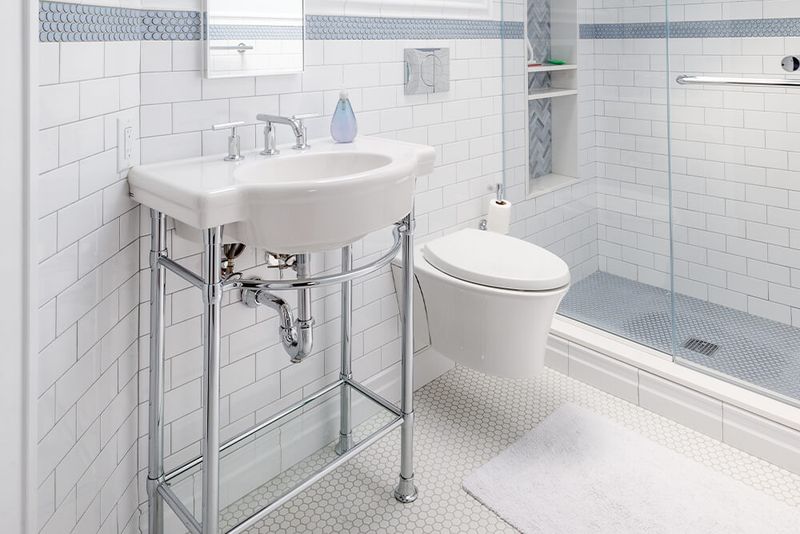
Wall-mounted toilets might seem like something from a space station, but they’re actually brilliant space-savers for earthbound bathrooms. The exposed floor underneath creates visual continuity that makes rooms appear larger.
Cleaning becomes effortless when you can mop right under the toilet without navigating around a bulky base. These modern fixtures also free up floor space for other essentials while adding a distinctly contemporary vibe.
11. Avoid Dark Paint Colors
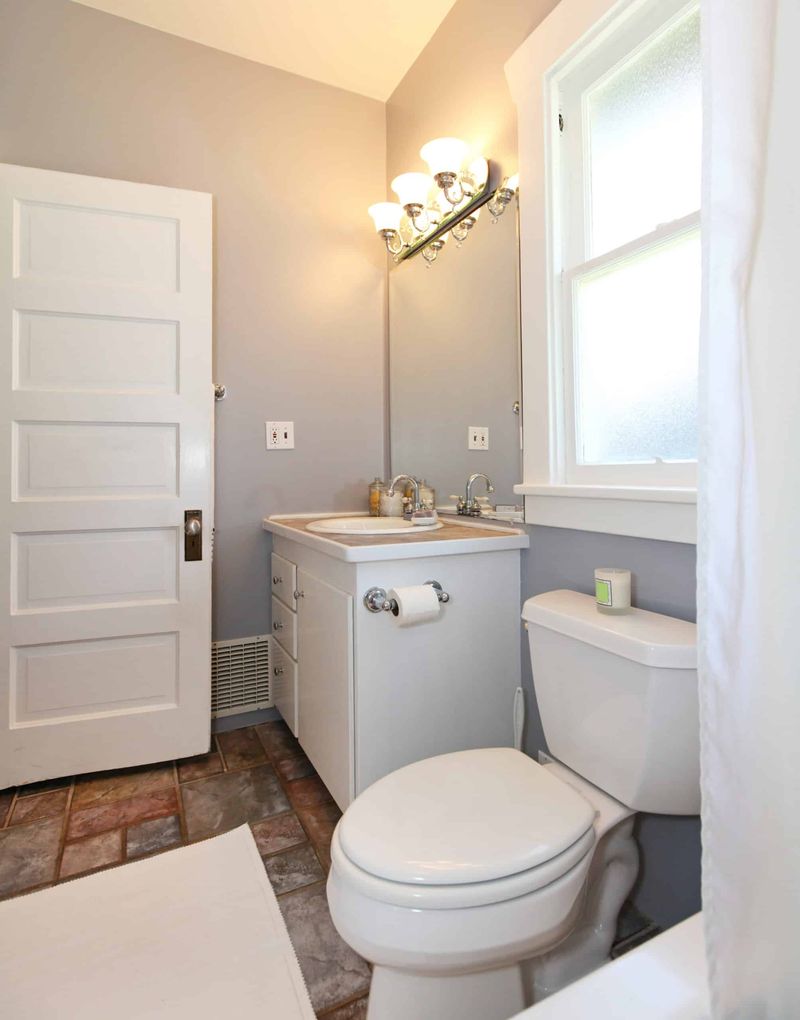
Dark colors might look sophisticated in large spaces, but they’re absolute space-killers in compact bathrooms. Deep hues absorb light instead of reflecting it, making walls feel like they’re closing in on you.
Save the dramatic dark shades for accent pieces like towels or artwork. Your bathroom needs every photon of light it can get to feel open and welcoming rather than cave-like and claustrophobic.
12. Skip Oversized Fixtures
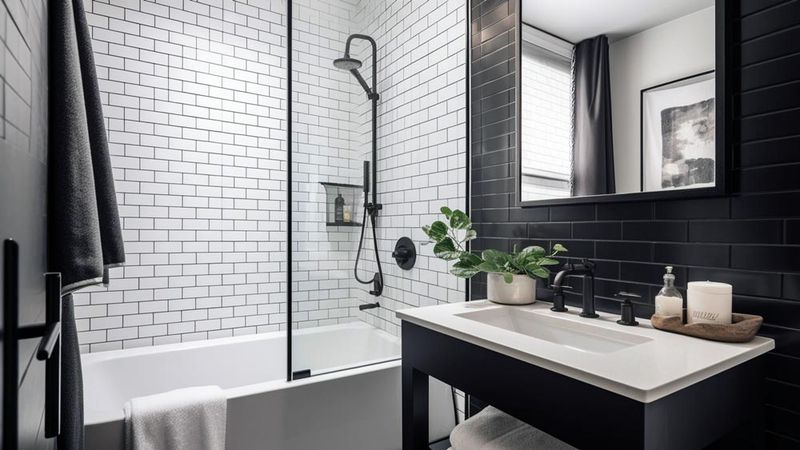
Giant fixtures in tiny bathrooms are like wearing a tuxedo to the beach. Sure, they might be impressive individually, but they’re completely wrong for the setting and make everything feel awkward.
Oversized vanities, massive light fixtures, or enormous mirrors overwhelm small spaces instead of enhancing them.
Choose appropriately scaled pieces that complement your bathroom’s proportions rather than fighting against them for dominance.
13. Don’t Neglect Proper Lighting
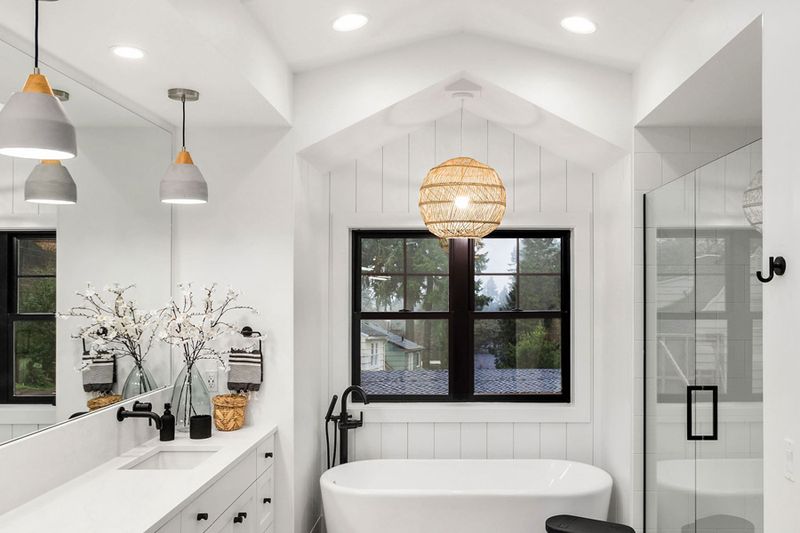
One sad overhead bulb casting harsh shadows is the fastest way to make your small bathroom feel like a dungeon. Poor lighting shrinks spaces visually and makes daily routines frustrating.
Layer your lighting with multiple sources including vanity lights, recessed ceiling fixtures, and maybe even a small window treatment that maximizes natural light.
Good illumination is absolutely essential for making compact spaces feel larger and more inviting.
14. Resist Busy Patterns Everywhere
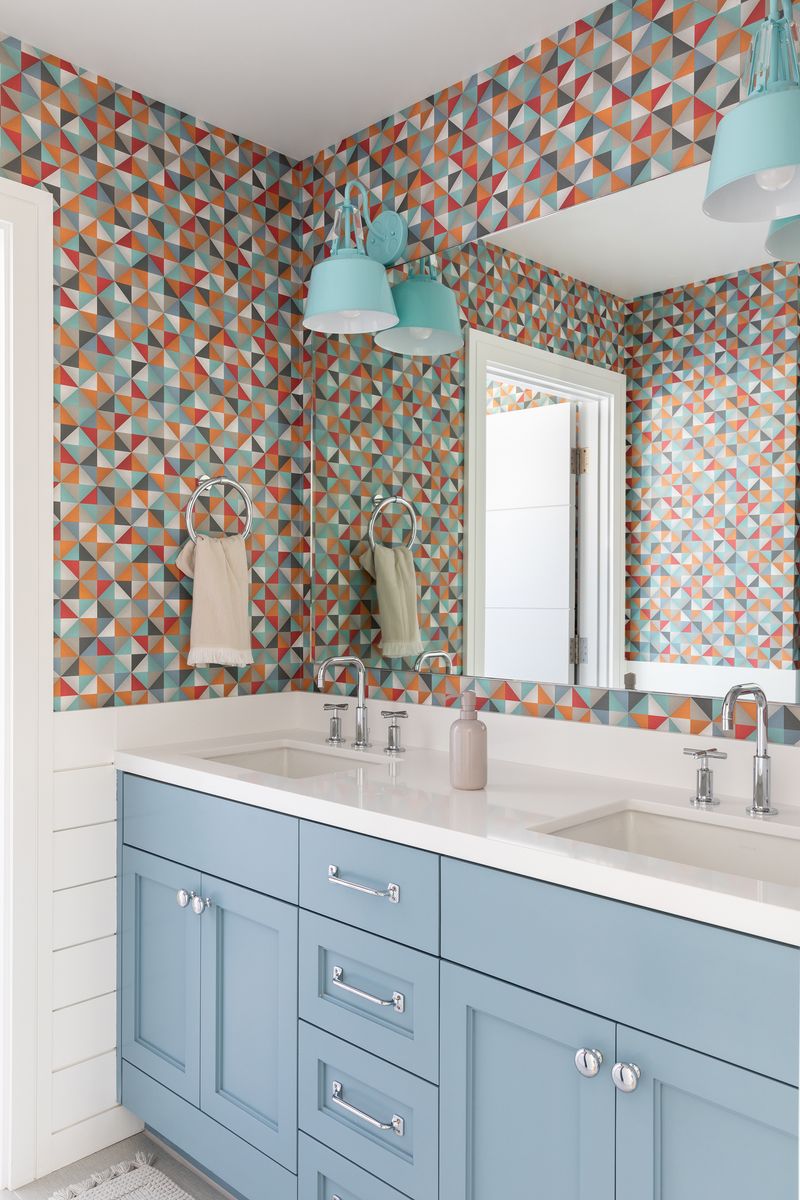
Covering every surface with busy patterns is like shouting in a library. Your eyes don’t know where to focus, creating visual chaos that makes small spaces feel even more cramped and overwhelming.
If you love patterns, choose one statement piece like an accent wall or decorative tile backsplash. Keep everything else simple and neutral to give your eyes places to rest and your space room to breathe.
15. Avoid Clutter On Every Surface
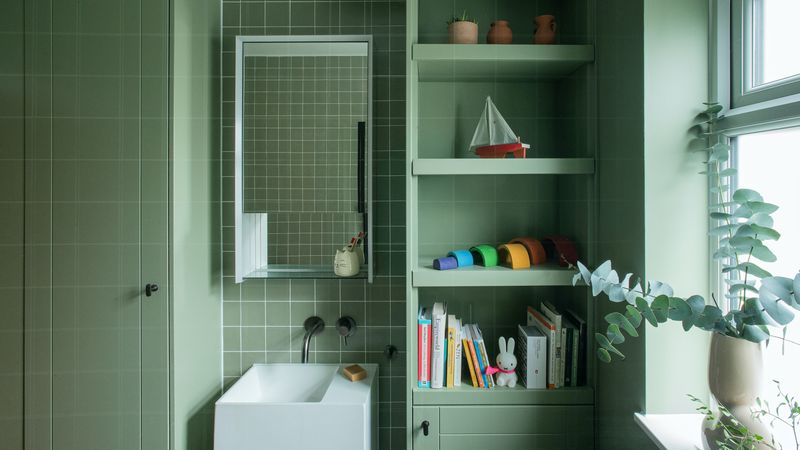
Countertops covered with bottles, brushes, and beauty products turn your bathroom into a chaotic pharmacy display. Visual clutter makes any space feel smaller and more stressful than it actually is.
Embrace hidden storage solutions and keep surfaces as clear as possible. A few carefully chosen decorative items have much more impact than a crowd of everyday necessities competing for attention on every available surface.
16. Don’t Block Natural Light
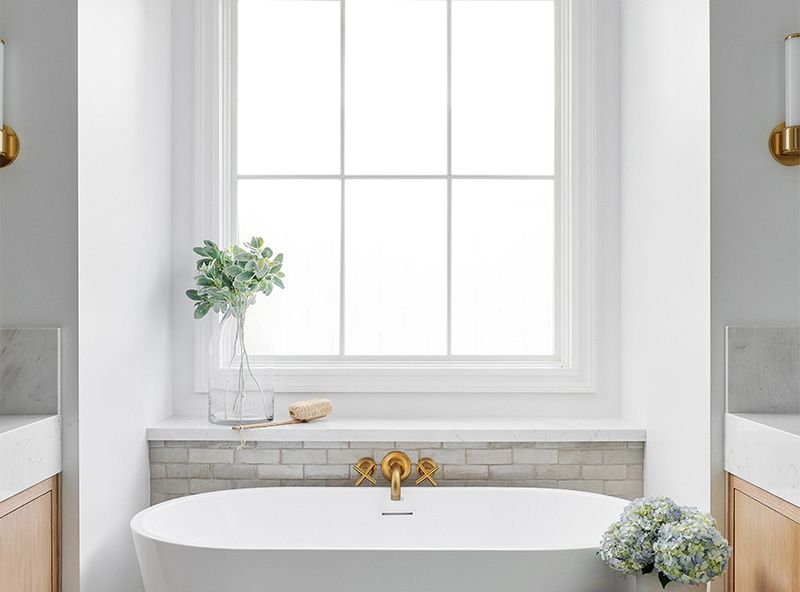
Heavy curtains or blinds that block precious natural light are like putting sunglasses on your bathroom. Every ray of sunshine is valuable real estate in compact spaces, so don’t waste it.
Choose window treatments that provide privacy while maximizing light transmission. Frosted glass, light-filtering shades, or strategically placed plants can give you privacy without sacrificing the brightness that makes small bathrooms feel more spacious and welcoming.
17. Skip Multiple Small Rugs

Scattering tiny rugs around your bathroom floor is like putting puzzle pieces in the wrong box. Multiple small rugs chop up the visual flow and make your floor area look fragmented and smaller.
Choose one appropriately sized rug that complements your space without overwhelming it. A single well-placed rug creates cohesion and allows the eye to perceive your floor as one continuous surface rather than a collection of disconnected islands.

